Trams, steam engines and buses on the Isle of Man
Posted by Chris Graham on 30th March 2023
Dick Bodily reports from an excellent event on the Isle of Man for enthusiasts of trams, steam engines and buses.
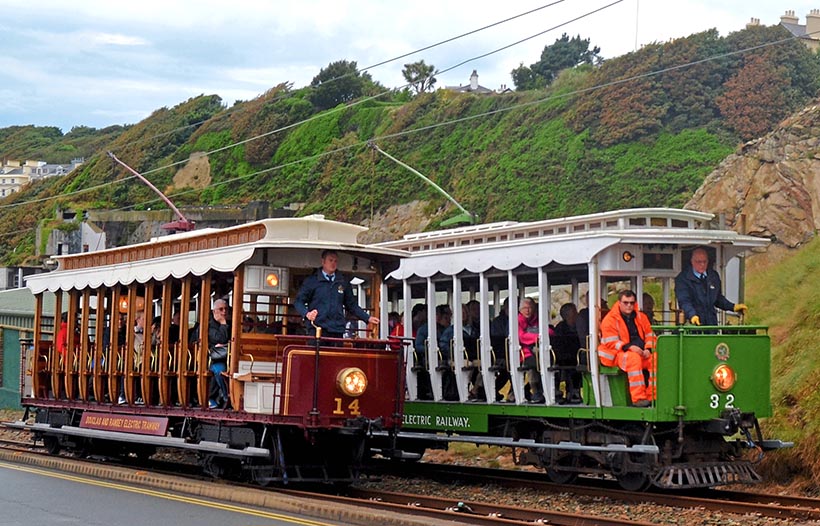
Friday’s parallel run seen leaving Derby Castle for Laxey featured two toast-rack-type open cars; No 14 and paddlebox car No 32. (Pic: Dick Bodily)
For five days every July – last year from the 27th to the 31st – a variety of heritage transport events are organised for enthusiasts and holidaymakers alike on the Isle of Man. Last summer, despite a rail strike and thanks to a National Express coach, I was able to catch the Liverpool-to-Douglas ferry and arrive on the island in time for the Thursday, Friday and Saturday events, and enjoy a very intensive Sunday morning Manx Electric Railway services before catching the afternoon ferry back to Liverpool.
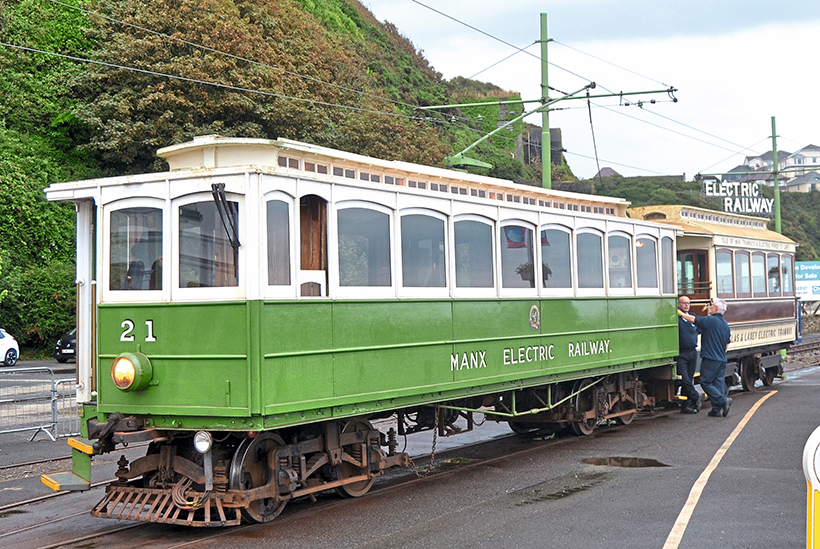
It’s unusual to see a saloon-type car hauling a saloon trailer. Winter saloon No. 21 has arrived at Derby Castle with the Royal trailer No. 59, so called as King Edward VII and Queen Alexandra travelled in it when visiting the island. (Pic: Dick Bodily)
It wasn’t possible to see all the heritage action taking place as there was so much going on from Port Erin in the south west to Ramsey in the north east. I spent the Thursday focusing on the Isle of Man Railway. The Friday I spent entirely on the Manx Electric Railway and the Snaefell Mountain Railway, until going to an eagerly-anticipated evening staged photographic event with an excellent barbecue afterwards on the IMR at Douglas.
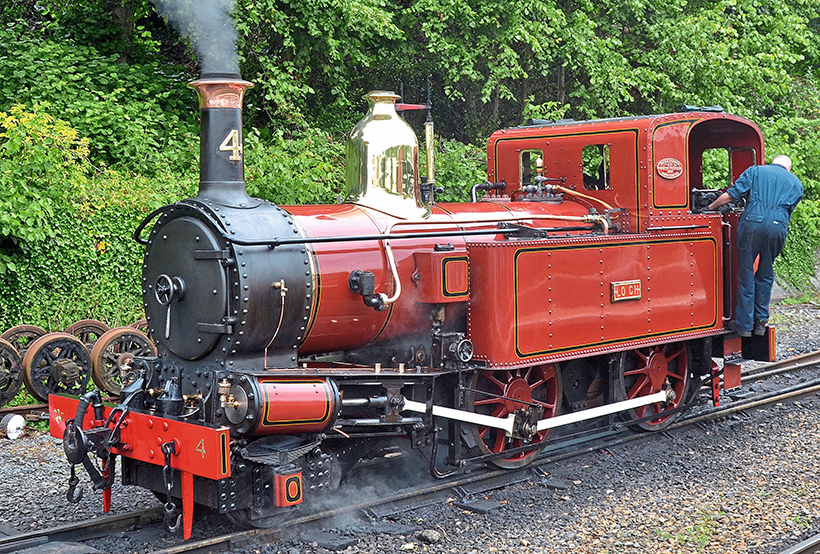
The beautiful No. 4 Loch of 1874 complete with Salter safety valve and unusual dome cover is seen at Douglas. (Pic: Dick Bodily)
On Saturday, after a tour of the IMR workshops, running shed and signal box I took in the Groudle Glen and Great Laxey Mines railways. Sunday morning’s MER special timetable was just like the old days with trams leaving Derby Castle every 10 minutes in the morning. The weather varied from brilliant sunshine to Saturday’s typical Manx steady light drizzle which is reflected in the quality of the photos.
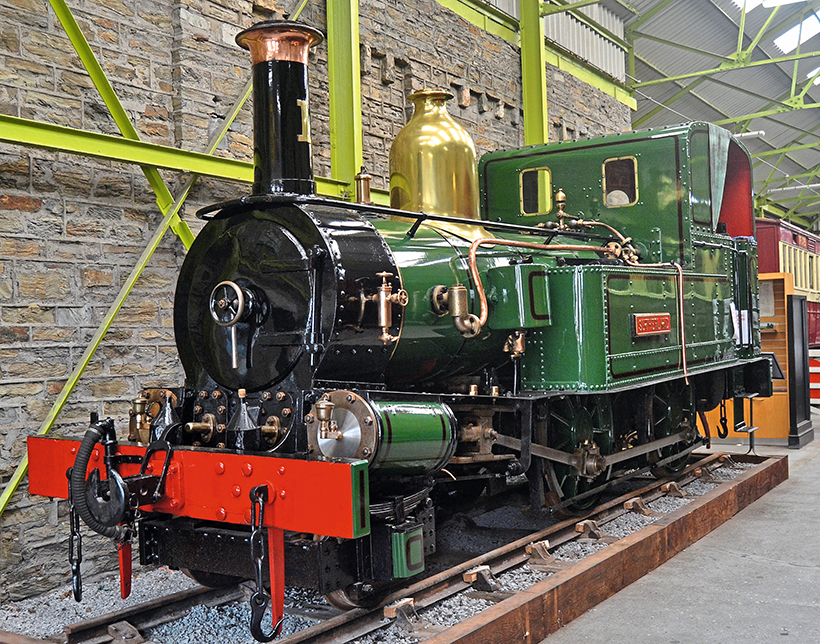
The oldest Isle of Man Railway locomotive No. 1 Sutherland of 1873, like No. 4 and No. 13 named after a company director, now on display in Port Erin museum. (Pic: Dick Bodily)
Three locomotives were hauling trains on the IMR, all Beyer Peacock-built 2-4-0Ts as are the rest of the IMR fleet apart from No. 12, the former Manx Northern Railway No. 4 Caledonia. Two carriage sets were utilised on main passenger services with a third set reserved for the dining train. The senior engine running was the small-boilered No. 4 Loch of 1874 complete with Salter safety valves and highly polished brass-work. Its red livery made a contrast with the two much newer green engines; No. 11 Maitland built in 1905 seen in Marquis of Ailsa-era spring green livery. and No. 13 Kissack built in 1910 in a darker shade of green which I personally find even more attractive. Maitland has recently returned to service after a mainland restoration. Nowadays, much overhaul work is contracted out to mainland firms such as Alan Keef, Severn Valley Railway and Statfold Barn.
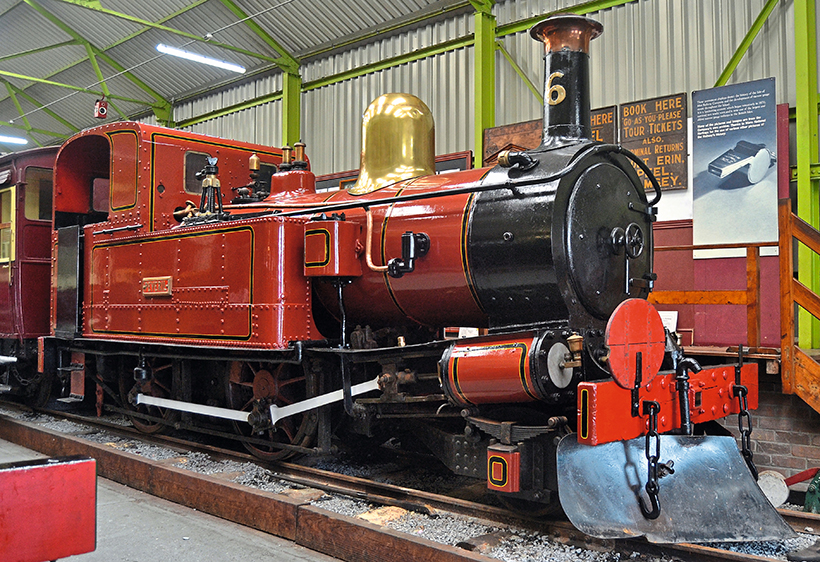
Also in the museum, recently repainted No. 6 Peveril is named after the book Peveril of the Peak which is partly set on the island. (Pic: Dick Bodily)
Parallel running involving No. 11 and No. 13 was put on for the photographic session on Friday evening, while more impromptu runs occasionally took place alongside the platform length, with the locomotive on a departing train running side by side with another running to the coal stage. On Friday the unique Dubs & Co of Glasgow-built 0-6-0T No. 15 Caledonia was in steam and running back and forth in the shed yard, but unfortunately it developed a hot bearing so it took no further part in the proceedings. Stored at the back of the running shed was recently withdrawn No. 8 Fenella awaiting its turn in the queue.

An impromptu parallel run by No. 13 Kissack heading for the coal stage and No. 4 Loch leaving for Port Erin. (Pic: Dick Bodily)
Two smartly repainted glowingly shiny locomotives could be seen inside the Port Erin Museum; 1873-built No. 1 Sutherland and No. 6 Peveril. It was an impressive turnaround from my 2019 visit when No. 6’s livery was looking equally as drab as that of large-boilered No. 16 Mannin, which has since been replaced on static display by No. 1.
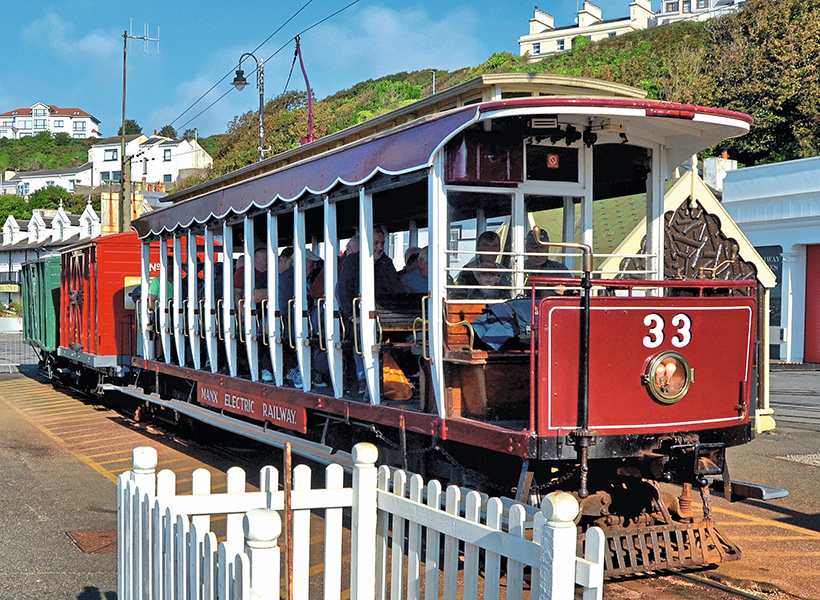
Friday’s 8.40am from Derby Castle reenacted the mail service of long ago by hauling two vans. No. 22 is normally a departmental car not in use for passenger services, so was especially sought out for a ride by keen tram enthusiasts. (Pic: Dick Bodily)
On Friday the MER had two toast-rack cars setting off early from Derby Castle running in parallel to Laxey, the following day one of the parallel runners was the 1893-built No 1. Numbers 1 and 2, despite their great age, were much in evidence over the festival period with both of them running on the busy Sunday morning service. Many services were being provided by toast-rack car and trailer combinations which were well filled with passengers even on the rainy Saturday.
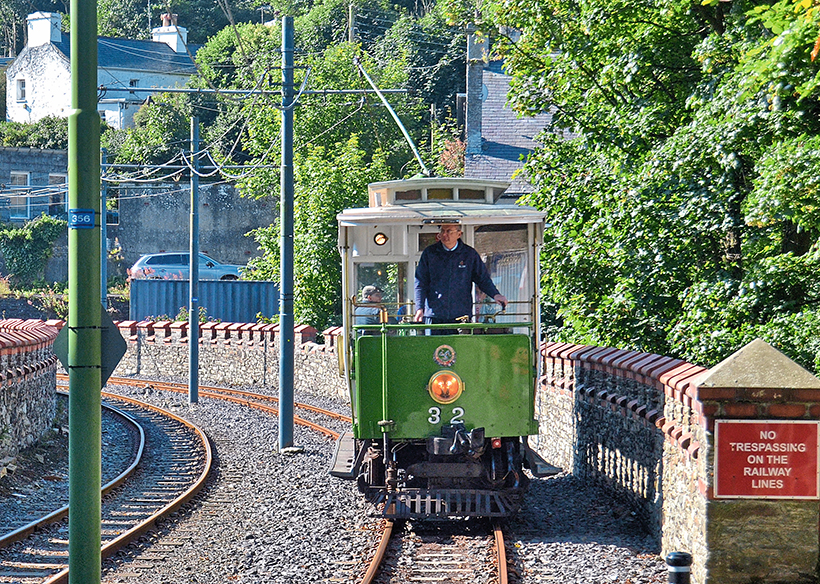
United Electric Car Company-built toast-rack car No. 33 seen crossing the castellated parapet bridge at Laxey was running a shuttle service to and from Dhoon quarry siding. No. 33 and sister car No. 32 are more powerful than the other cars. (Pic: Dick Bodily)
By contrast winter saloons, which because of the island’s often inclement weather are usually the backbone of regular services, were conspicuous by their absence. Only green No. 21 was regularly used and was seen hauling trailer No. 59, the Royal trailer, which is sometimes referred to as the ‘Doll’s House’ because of its small size. Tunnel car saloons Nos. 5, 7 and 9 all made several trips though. No. 7 in its Douglas & Laxey Electric Tramway white, blue and gold livery is to my mind and to many others as well the smartest tram car of the MER fleet. All of the operable fleet of motorised cars apart from 32 and 33 were built by GF Milnes & Co of Birkenhead, as were about half of the horse tram cars as well.
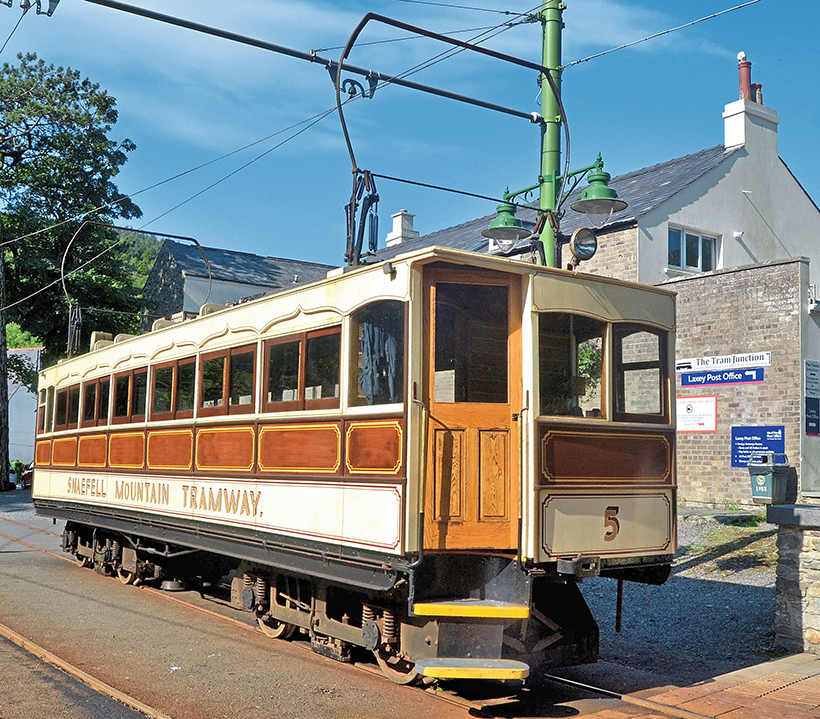
The miscreant Snaefell Mountain Railway No. 5, responsible for bringing down the wires on the mountain, seen earlier that day at Laxey. (Pic: Dick Bodily)
I travelled to Laxey on the Friday 8.40am from Derby Castle. It comprised No. 33 hauling two mail vans. I well recall seeing mail vans being taken along the line when I camped as a boy scout at Lewaigue in the early 1960s and believe this practice continued into much more recent times. It was also a nostalgic trip for me as to return to the ferry from camp our ‘Skip’ hired a MER tram car and a van to respectively transport us and our kitbags from Lewaigue to Derby Castle, where two horse trams took us on to the ferry.
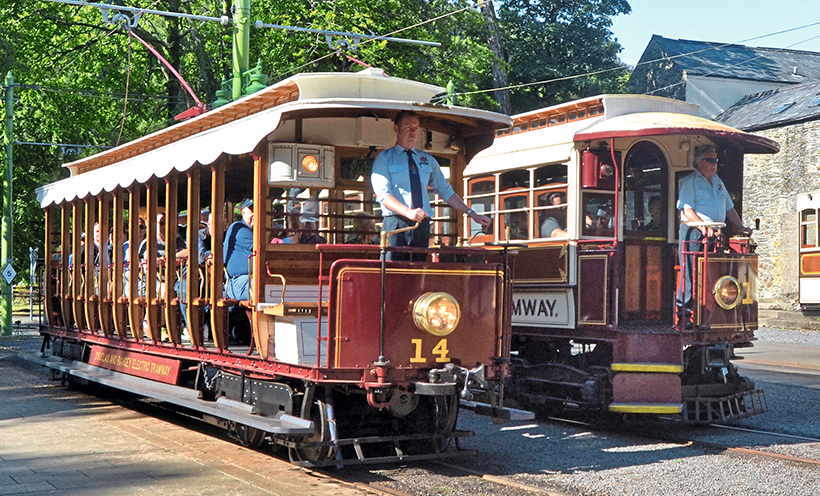
Friday’s parallel run involved cars Nos. 14 and 1, seen this time arriving at Laxey. (Pic: Dick Bodily)
Everything seemed to go like clockwork until Friday afternoon when Snaefell Mountain Railway car No. 5 brought down the wires. Visitors stuck at the top of the island’s mountain above the isolated damaged section were brought down to the Bungalow on the TT course by a tram car that happened to be at the summit, then quickly transferred to buses. A couple of holidaymakers affected told me they were very impressed by their ‘rescue’ and only lost an hour of their afternoon’s leisure.

No 11 Maitland has recently had a major overhaul including a new boiler; one of five built for the IMR by the Severn Valley Railway. (Pic: Dick Bodily)
The delightful Groudle Glen Railway is well worth a visit, children love the little trains, but it involves a steep climb on a track that can become rather treacherous, especially for the elderly, when wet so great care and strong footwear is recommended if planning a visit. On the day I visited an original 1896 engine Sea Lion was hauling four original 1896-dated coaches, but the following day it was to feature all three steam locomotives running trains. The other two are named Brown Bear and Otter, inspired by the menagerie which once stood at the Sea Lion Bay terminus when Groudle Glen was a fashionable Edwardian pleasure garden. Heavy rain stopped me from making anything other than a lightning stop just to see an engine in steam at The Great Laxey Mines railway.
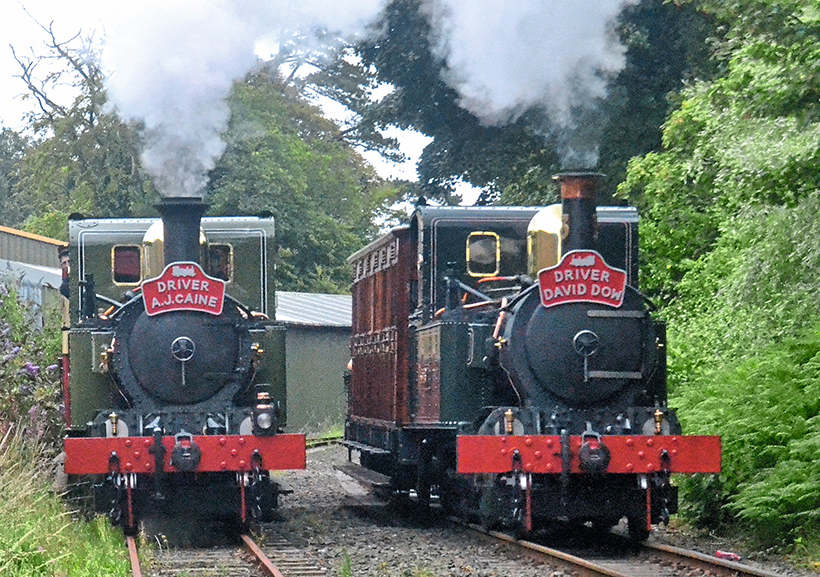
As a tribute to the ‘expresses’ that ran in parallel towards the junction of the Peel and Port Erin lines a staged photographic event took place. No. 13 is on the very long siding that once was the Peel line and No. 11 on the Port Erin line. (Pic: Dick Bodily)
I finished up my short heritage transport-themed holiday in style with a ride on the reinstated horse-drawn tram. Five Shire and Clydesdale heavy horses were taking turns pulling tramcar 36 along the prom. At present it’s the only car in use as it’s the only one fitted with a transponder that can automatically control necessary traffic lights where the trams cross over one busy traffic lane to their present terminal point. Presumably similar devises are fitted to the MER motor tram cars so they can cross roads protected by traffic lights.

Groudle Glen’s 1896-built Sea Lion is about to leave for the terminus named after itself with its 1896 four-wheelers on the rainy Saturday. (Pic: Dick Bodily)
For anyone who prefers visiting interesting places to sunbathing there is so much to see on the island. I booked my break with a Manx-based organisation that advertises in heritage transport magazines, tailoring your break to suit you for how many days you want, arranging your ferry from Heysham or Liverpool, your accommodation in Douglas and your travel pass. This was ideal for visiting the Summer Transport Festival. If it’s general sightseeing that you want with just a ride on the MER, the SMR and on the IMR, other mainland firms run excellent package holidays as well, taking their coaches over on the ferry from most mainland towns with trips included during a week’s holiday.

The Great Laxey Mine Railway’s miniscule Ant and carriage in pouring rain at Laxey. (Pic: Dick Bodily)
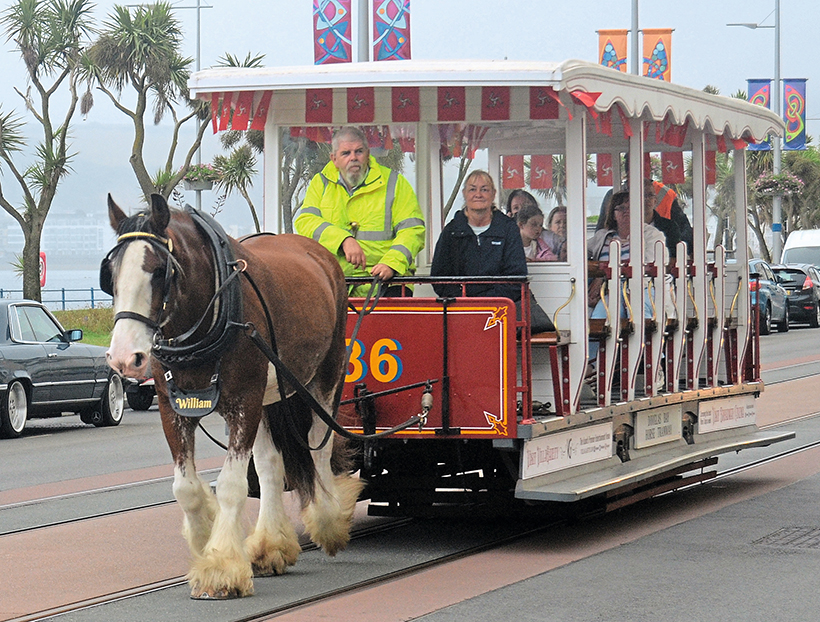
The horse tram service along Douglas promenade made a very welcome return on the Friday. Just car No. 36 was in use as it is the only car fitted with a transponder to control traffic lights along the new layout. (Pic: Dick Bodily)

The iconic red and white preserved Isle of Man Transport Leyland bus seen on the promenade. (Pic: Dick Bodily)
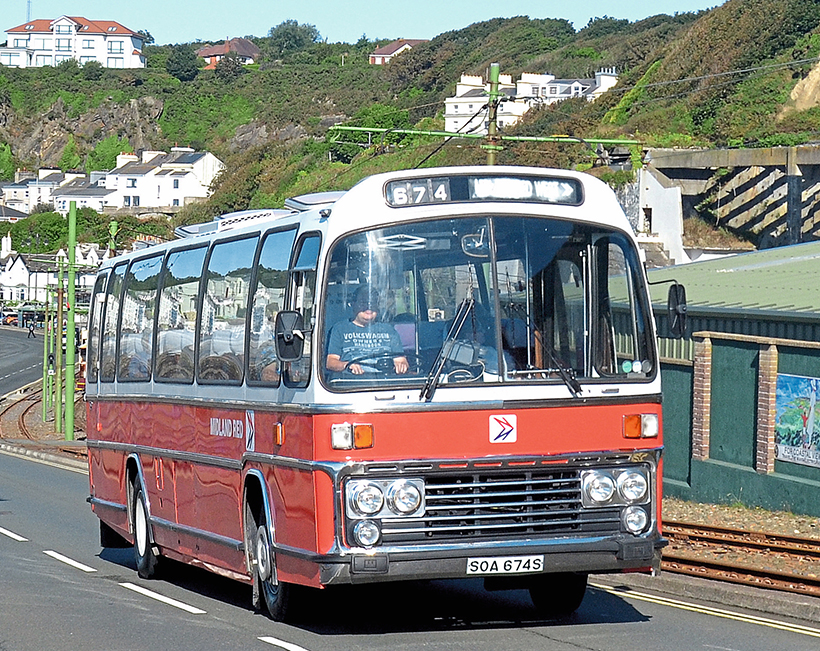
A gleaming, preserved Midland Red coach passes the Derby Castle tram sheds. (Pic: Dick Bodily)
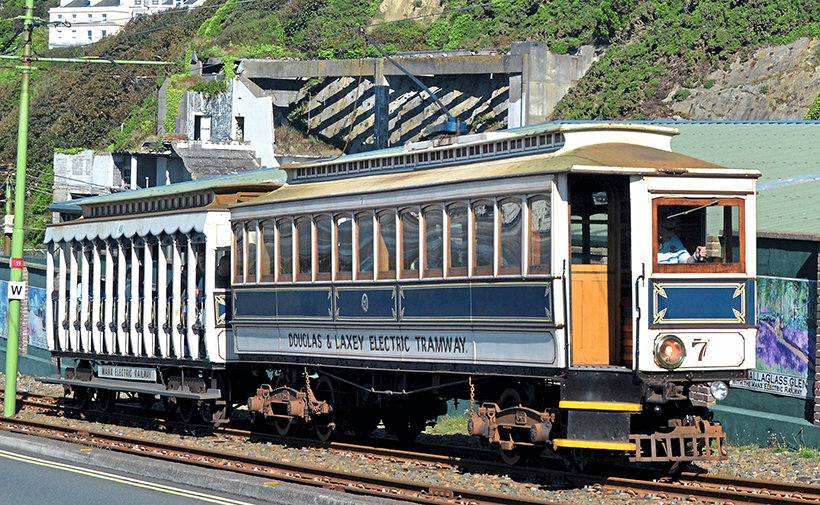
Several enthusiasts told me that this was their favourite tram combination. Tunnel car No. 7 with matching-liveried trailer looks particularly smart in the sunshine as it heads towards Onchan Head. (Pic: Dick Bodily)

One of the three original cars, No 2, climbs towards Port Jack hauling toast-rack-style trailer No 42. (Pic: Dick Bodily)
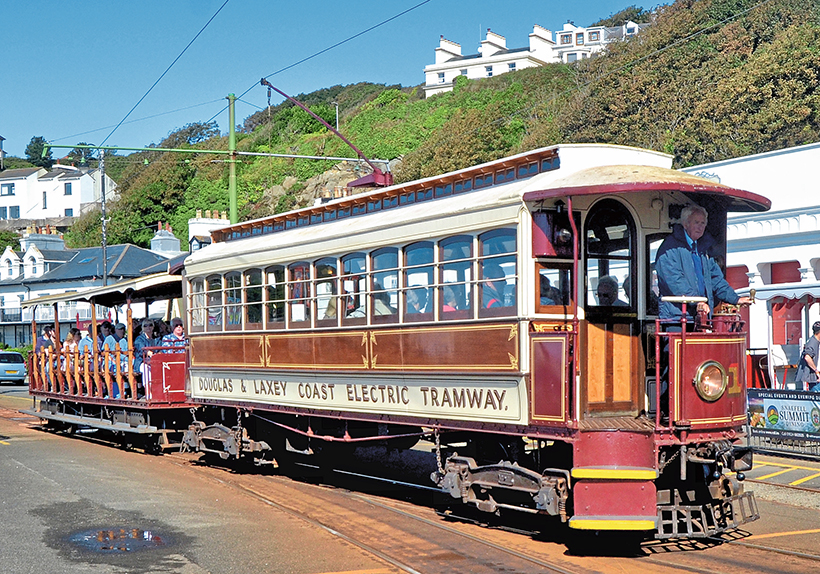
Both No. I and No. 2 were out on the intensive workings during Sunday morning. Here the doyen car waits to leave Derby Castle. (Pic: Dick Bodily)
This report comes from the latest issue of Old Glory, and you can get a money-saving subscription to this magazine simply by clicking HERE
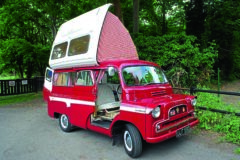
Previous Post
Incredibly original 1963 Bedford CA Dormobile
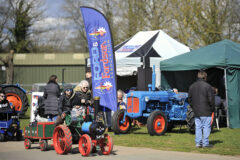
Next Post
Heritage Transport Show cancelled!



